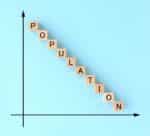
Urban Population Revival: A Closer Look
- NPG
- May 30, 2024
- NPG Commentary
- 0 Comments
The Impact of Immigration on Urban Growth

A recent Brookings article, titled New Census Data Hints at an Urban Population Revival, Assisted by Immigration, written by William H. Frey, presents census data that showcases a significant demographic shift influenced by domestic and international migration patterns, particularly during and after the peak pandemic years. Domestic migration initially led to substantial population declines in major metro areas like San Francisco, Cook County (Chicago), and Washington, D.C., as people moved away from densely populated urban centers. However, a rebound in both domestic and international migration is now contributing to population gains. The boost from international immigration has been particularly impactful, with 61% of total U.S. immigrant gains in 2021-22 and 2022-23 occurring in just 20 metro areas, despite these areas only comprising 36% of the U.S. population.
While these demographic shifts are underscored as improvements by Frey, they also highlight certain risks associated with rapid population growth in urban areas. The article states, “Immigration is likely to be an important future contributor to future city and metropolitan growth, and has shown to be essential for the nation’s demographic vitality.” However, Negative Population Growth cautions that this growth is not without its challenges. The “urban demographic revival” will take years to assess fully, and concerns about overpopulation, strain on infrastructure, and economic and environmental disparities remain.
Although domestic migration and natural increases are beginning to return to pre-pandemic levels, Frey’s work hammers in the critical role of immigration in mitigating population losses. For instance, 11 major metro areas, including Miami and Seattle, “would have lost population were it not for immigration from abroad.” This statement reminds us of a core NPG principle: without immigration, U.S. population would begin to decline and ultimately reach a lower overall number.
As we contemplate the implications of these demographic trends, it becomes crucial to support the mission of NPG to slow, halt, and eventually reverse population growth. The challenges that stem from rapid urban population increases—such as strained infrastructure, environmental degradation, and economic disparities—cannot be overstated. By advocating for immigration policies prioritizing conservation, resource management, and future generations of Americans, we can ensure a balance that promotes demographic vitality and ecological stability.
Through your continued support and donations to NPG, we can advocate for these necessary changes.
Make a Difference – Donate Now


